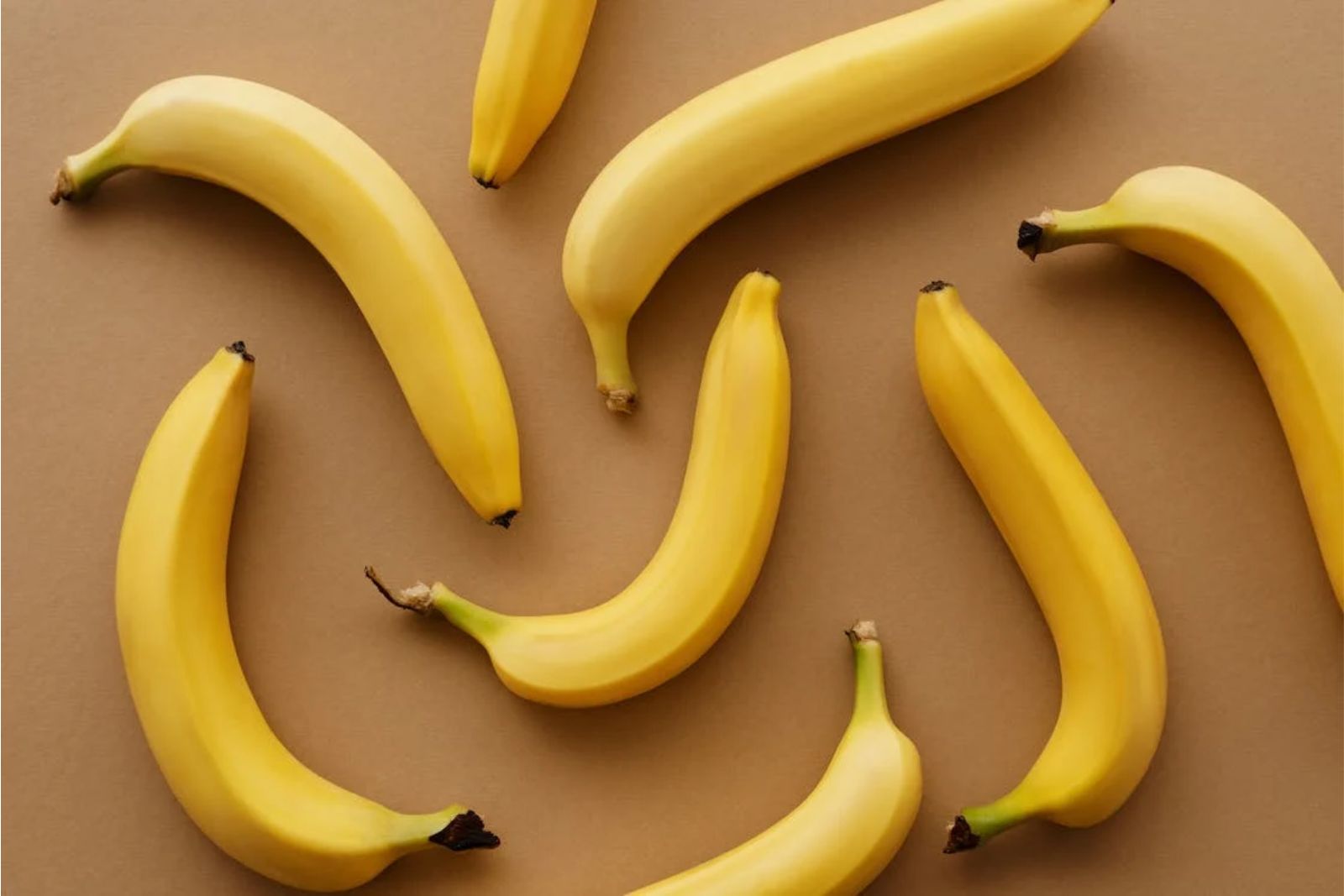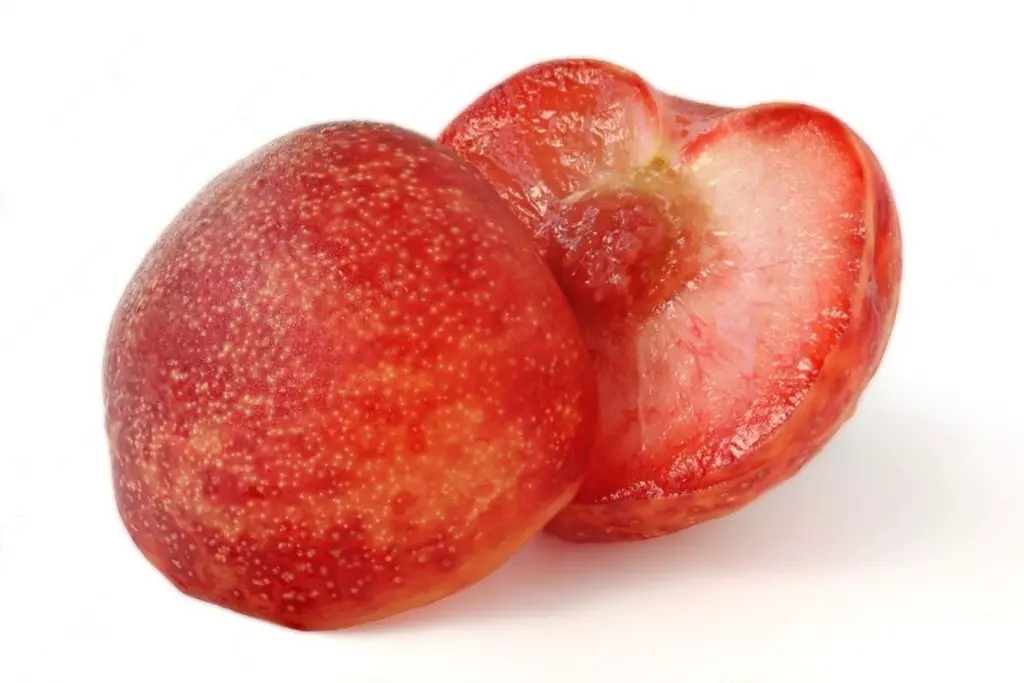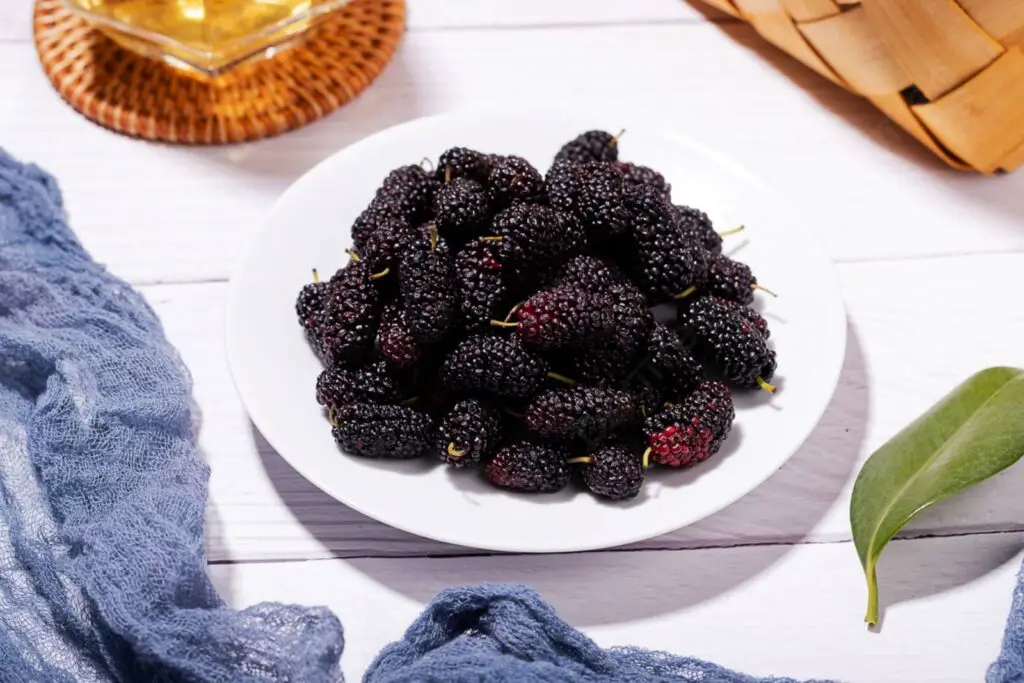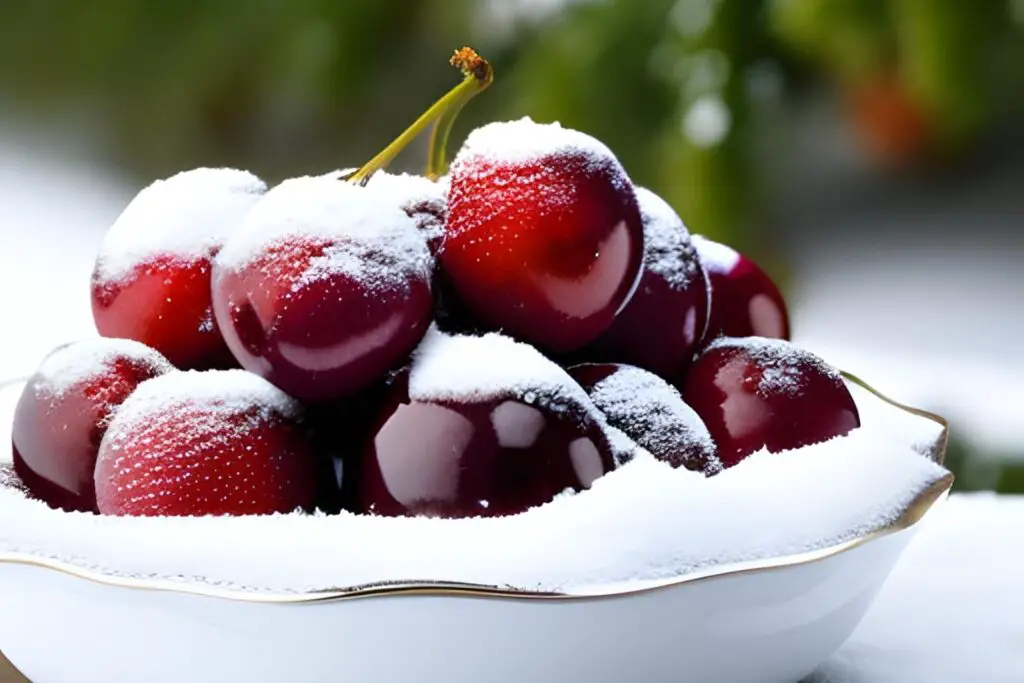
Bananas are vibrant and nutritious fruit that is loved by people of all ages. Bananas are known for their appealing yellow color, creamy texture, and delightful natural sweetness. Packed with essential vitamins, minerals, and dietary fiber, bananas are not only delicious but also offer numerous health benefits. Whether enjoyed on their own as a quick and convenient snack or incorporated into various recipes, bananas provide a burst of energy and a satisfying flavor.
If you have a surplus of ripe bananas or want to prolong their shelf life, freezing them is an excellent solution. In this guide, we’ll explore the art of freezing bananas, sharing valuable tips and techniques to preserve their quality and taste, ensuring that you can enjoy the goodness of bananas in your smoothies, baked goods, or as a refreshing frozen treat, anytime you desire, even when fresh bananas are not readily available.
Here are the simple steps to freeze bananas:
Step 1: Select the Right Bananas
When selecting bananas for freezing, it’s crucial to find the right balance of ripeness and firmness. Aim for bananas that are ripe but still firm to the touch. Look for those with a vibrant yellow color and a few brown speckles on the skin. These bananas are at their optimal sweetness and flavor, making them perfect for freezing.
On the other hand, avoid overly green or mushy bananas for freezing. Green bananas are under-ripe and lack the natural sugars that develop as the fruit ripens. They may not provide the desired sweetness or flavor when thawed. Similarly, mushy bananas that are too ripe tend to become overly soft and lose their texture when frozen and thawed.
By selecting bananas with the right degree of ripeness, you ensure that the frozen bananas will retain their taste and texture. The quality of the bananas you freeze directly impacts the overall quality of the frozen product. So, take a moment to choose bananas that are ripe yet firm, and you’ll be on your way to freezing delicious and versatile bananas for later use.
Step 2: Prepare the Bananas
To prepare the bananas for freezing, begin by peeling them and discarding the skins. The peel is not necessary and can be composted or discarded. Once peeled, it’s time to slice the bananas into evenly sized-pieces.
While there is no specific rule for the size of the slices, it is generally recommended to cut them into 1-inch chunks. This size is convenient because it allows the bananas to freeze uniformly and also makes it easier to measure and use them in different recipes later on.
Uniformly sized banana chunks freeze more evenly, ensuring that all pieces freeze at the same rate. This helps maintain the overall quality and texture of the frozen bananas. Additionally, it makes it easier to remove the desired amount of frozen bananas when you’re ready to use them in recipes like smoothies, baked goods, or other culinary creations.
So, by peeling the bananas and cutting them into evenly sized pieces, preferably 1-inch chunks, you set the stage for successful freezing and future usage of the bananas in various delightful dishes.
Step 3: Flash Freeze
Step 3 involves flash-freezing the banana slices to ensure that they don’t stick together during the freezing process. Here are the steps on how to do it:
- Start by preparing a baking sheet. Line it with parchment paper to prevent the banana slices from sticking to the surface.
- Take the sliced bananas and lay them in a single layer on the parchment paper. Make sure the banana slices are not touching each other. This spacing is essential to prevent them from freezing together into a clump.
- Once the baking sheet is prepared, place it in the freezer. Allow the banana slices to freeze for approximately 1 to 2 hours, or until they are solid and firm.
Flash freezing is a technique that rapidly freezes individual banana slices. By freezing them separately, it helps to maintain their integrity and prevents them from sticking together. This way, you can easily remove the desired amount of frozen banana slices without having to thaw the entire batch.
Once the banana chunks are solid and firm, they are ready to be transferred to airtight freezer bags or containers for long-term storage. Flash freezing ensures that the frozen bananas remain separate and don’t clump together, allowing you to easily access and use the desired amount in your recipes without the need for thawing the entire batch.
Step 4: Store Frozen Bananas
After the banana slices have been flash-frozen and are solid, it’s time to store them properly to maintain their quality. Follow these steps for storing frozen bananas:
- Transfer the frozen banana slices into airtight freezer bags or containers. Ensure that the bags or containers are suitable for freezer storage to prevent freezer burn and maintain the flavor and texture of the bananas.
- Label the bags or containers with the freezing date. This step is crucial for keeping track of the freshness of the frozen bananas. It’s recommended to use a permanent marker or freezer-safe labels to write the date clearly.
- As you seal the bags or containers, try to remove as much excess air as possible. Excess air can lead to freezer burn, which can negatively affect the quality of the bananas over time. Squeezing out the air and sealing the bags or containers tightly will help prevent this issue.
- Once the frozen bananas are securely stored, place them back into the freezer. It’s best to store them in a part of the freezer where the temperature remains consistent.
- Frozen bananas can be stored in the freezer for up to 3 months while maintaining quality. Beyond this timeframe, they may start to develop freezer burn and lose their taste and texture. It’s a good practice to consume them within this period for the best culinary results.
By properly storing the frozen banana slices in airtight containers, labeling them with the freezing date, and removing excess air, you can maintain the quality of the bananas and ensure their long-term storage in the freezer. This way, you’ll have a convenient supply of frozen bananas for your recipes whenever you need them.
Step 5: Thaw the Frozen Bananas
Step 5 focuses on thawing and using frozen bananas in various recipes. Here’s how to thaw and utilize them:
- When you’re ready to use the frozen bananas, remove the desired amount from the freezer. Keep in mind the quantity required for your recipe or the serving size you desire.
- Transfer the frozen bananas to the refrigerator. Place them in a container or on a plate to catch any liquid that may be released during thawing.
- Allow the frozen bananas to thaw in the refrigerator for a few hours or overnight. Thawing them in the refrigerator helps maintain their texture and flavor while ensuring they thaw evenly.
- Once the bananas are thawed, they will have a softer texture compared to fresh bananas. This softer texture makes them perfect for baking or blending into recipes like smoothies, banana bread, muffins, or even as a base for healthy ice cream alternatives.
- Use the thawed bananas in your desired recipes. Mash them for baking purposes or blend them for smoothies or frozen treats. Experiment with different recipes and get creative with incorporating the thawed bananas into your favorite dishes.
Thawed bananas bring a natural sweetness and moisture to recipes, making them a versatile ingredient. The softer texture of thawed bananas makes them easier to incorporate into batters, doughs, or blended mixtures. So, whether you’re baking or blending, enjoy the convenience and deliciousness of thawed bananas in a variety of culinary creations.
Other related questions
Can you refreeze bananas?
No, it is not recommended to refreeze bananas once they have been thawed. When bananas are frozen and then thawed, their texture and quality may deteriorate. It is best to use the thawed bananas immediately or store them in the refrigerator briefly before using them in recipes.
How do I know if the bananas have gone bad after being frozen?
After being frozen, bananas may develop signs of spoilage if they have gone bad. Look for changes in color, such as excessive browning or darkening. Additionally, a mushy or slimy texture and a strong, unpleasant odor are indicators of spoilage. If you notice any of these signs, it is best to discard the frozen bananas as they may have lost their quality and flavor.
How do I prevent frozen bananas from turning brown?
To prevent frozen bananas from turning brown, you can use a few techniques. One method is to dip the sliced bananas in lemon juice or a citric acid solution before freezing. This acid helps slow down the enzymatic browning process. Alternatively, you can use an airtight container or freezer bag, ensuring all excess air is removed, to minimize exposure to oxygen, which can accelerate browning. Lastly, freezing the bananas quickly through flash freezing can also help preserve their color by minimizing the time they are exposed to oxygen.
Can I freeze bananas for banana ice cream?
Yes, bananas can be frozen and used to make delicious and creamy banana ice cream. To freeze bananas for this purpose, peel and slice ripe bananas into chunks. Arrange the banana chunks on a baking sheet lined with parchment paper, making sure they are not touching. Freeze the banana chunks until solid, then transfer them to an airtight container or freezer bag for long-term storage. When ready to make banana ice cream, simply blend the frozen banana chunks until smooth and creamy, and enjoy!
Does lemon juice affect the taste of the bananas after dipping it?
When using lemon juice to prevent bananas from browning, it can introduce a subtle citrus flavor to the bananas. However, the impact on taste is typically minimal, especially when used in small amounts. The acidity of the lemon juice helps preserve the color and freshness of the bananas while adding a slight tang, which can complement certain recipes. Adjust the amount of lemon juice used based on personal preference and the intended use of the bananas.
Can I freeze bananas that are already mashed?
Yes, it is possible to freeze mashed bananas. When freezing mashed bananas, ensure they are stored in an airtight container or freezer bag. It is recommended to portion the mashed bananas into individual servings or the desired recipe measurements to make it easier to thaw and use in future recipes, such as baking or smoothies. When thawed, the texture of mashed bananas may become softer, but they can still be used effectively in various culinary applications.








